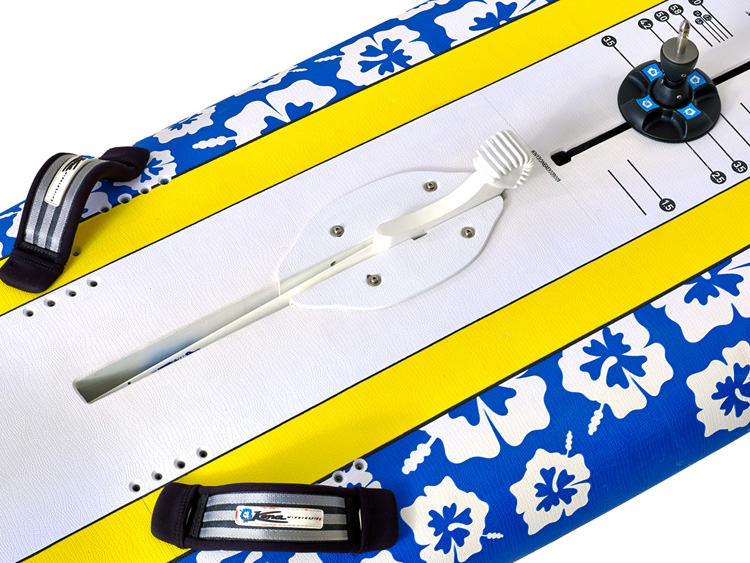Kona is one of the most iconic windsurfing classes. With time (let's say, a couple of decades), you might need to replace your deck pad.
The replacement process is not complicated. Michael Baksh, Cody, and Duane Steward have produced an instructional video that makes things easy.
Ready to change your Kona One deck pad?
Materials
Here's what you will need:
- Scraper and sandpaper for removing the old deck;
- Water-resistant contact cement for gluing;
- Paint roller for smoothing the deck;
- Blade for cutting the deck pad;
Kona experts underline that glue calls for a 10-minute dry period before joining the two surfaces and a two-hour working period before the glue is too dry.
Installing a Kona Deck 101
The first step (stripping) is to remove the old deck with a sharp blade.
You can also do it by sanding the surface, but be careful not to dig into the fiberglass of the board.
In the second step (measuring), you'll lay out the new pad using the logos, centerboard cutout, mas track, fin screw hole, and plugs to gauge the position from nose to tail.
In the third step (gluing the nose), spread the glue wide enough to be sure the yellow stripes will be glued once you lay the deck pad down.
Glue the underside of the deck pad while it is pulled back.
Ready?
Fourth step (gluing tail): Now, roll the deck pad onto the board and use rollers to press the pad to the board firmly and flatten any air pockets or bubbles.
Done?
Now, fold the tail of the deck pad forward so you can put the glue on the tail of the board. Roll the entire pad.
The fifth step is to mark the holes for the foot strap screws, and in your sixth step, make sure you spread glue on the rail and deck pad and firmly roll it.
Do not roll the nose and tail zones yet.
Now, cut some of the excess deck pad off the rails. Roll it from the middle of the board outwards to the rails.
Cut the excess around the nose and tail.
In the seventh step (rolling the ends), it's time to roll the tail first and move to the rails through to the tail of your Kona board.
Try to squeeze any wrinkles you find.
In the eighth step (marking the foot strap screws), use a permanent marker to identify the screw holes.
Finally, it's time to move forward (trimming). Use a sharp blade and cut the excess deck pad slowly to ensure a clean and hard edge on the rails.
Let the glue dry for 48 hours so it can cure completely.
And congratulations, you've got a brand new Kona One windsurfing board.
